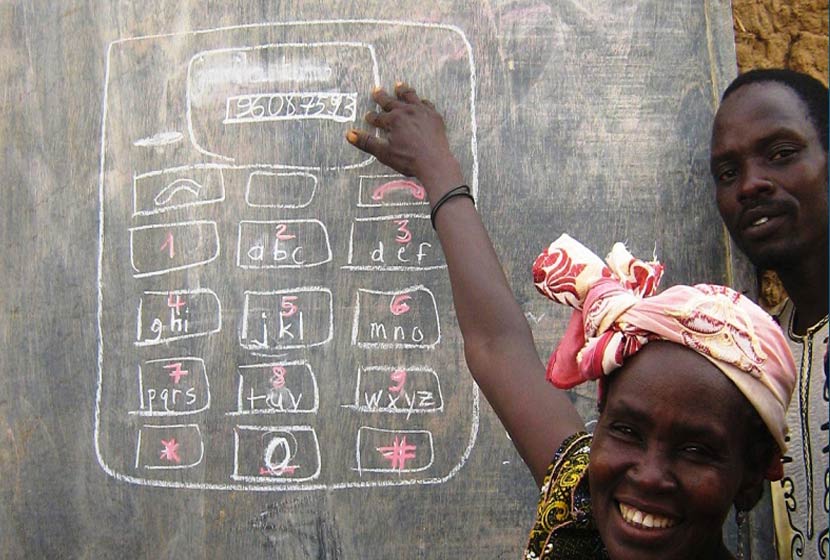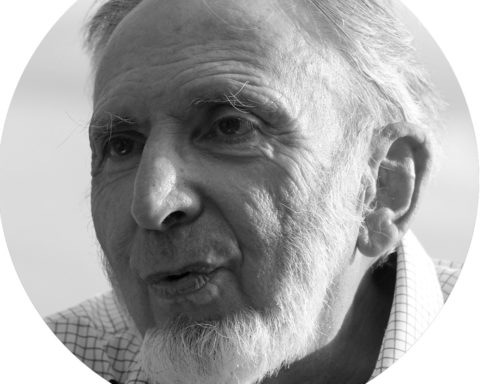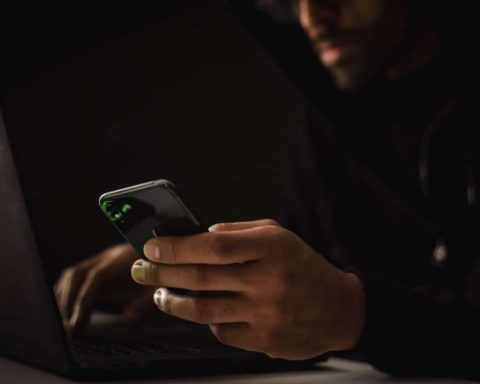Patrick Vinck, a researcher at the Harvard School of Public Health and director of the Harvard Humanitarian Initiative's program for vulnerable populations, presented a new report detailing the promise of technology in humanitarian disasters.
The report highlights the great potential of cell phones and social media with some caveats
Between 2008 and 2013, the number of global mobile phone users in developing countries almost doubled, with 2.5 billion new subscribers.
This massive change has many social and economic ramifications. For disaster relief and humanitarian aid workers, it means a new vision on the front line: more opportunities for people to respond to first aid and a need for vigilance to ensure that the strongest digital voices are not claiming a disproportionate share of relief resources.
The promise of technology in humanitarian disasters is the subject of a new report released Thursday in a webcast of a Harvard Humanitarian Initiative (HHI) seminar webcast from the Cambridge offices. The event attracted representatives from HHI, the American Red Cross, the International Federation of Red Cross Societies, the International Telecommunication Union and IBM.
The World Disasters Report 2013
 "Focus on Technology and the Future of Humanitarian Action" was published by the International Federation of Red Cross Societies and edited by Patrick Vinck. Other contributors also worked on the report: Jennifer Leaning, IHH co-founder François-Xavier Bagnoud professor of health practice and rights, and Phuong Pham, director of IHH's program on evaluation and implementation of science.
"Focus on Technology and the Future of Humanitarian Action" was published by the International Federation of Red Cross Societies and edited by Patrick Vinck. Other contributors also worked on the report: Jennifer Leaning, IHH co-founder François-Xavier Bagnoud professor of health practice and rights, and Phuong Pham, director of IHH's program on evaluation and implementation of science.
Vinck said Thursday that " The objective of the report was to ensure that humanitarian actors were operating as effectively as possible. The authors do not claim to have answers to all the problems.he says, but I wanted to raise some key issues. »
The report presents several case studies highlighting how technology can be used to assist in humanitarian disaster situations. One is the case of doctor Zaher Sahloul, who used social media to provide medicines, medical equipment (donations worth more than $5 million) to help people in Syria, and sent YouTube videos of medical advice to Syrian doctors. Sahloul worked with Internet Systems Engineer Dishad Othman, who helped encrypt data and find secure ways for Syrians inside the country to communicate over the Internet.
Disaster information is as important as food and water. Increasingly, the report says, this information is generated by affected populations and shared across digital platforms. The analysis of large amounts of data in real time is one of the challenges of the new information age.
Another topic addressed in the report is the potential for technological tools to increase the effectiveness and reach of early warning systems.
Laura Howe, vice-president of public relations for the American Red Cross, said that during the 2010 earthquake in Haiti, the organization used social media for the first time to share information about natural disasters. The problem, however, is understanding how to interpret and use this information: it has been a priority choice for the Red Cross ever since. Today, she says, the organization has trained volunteers dedicated to responding to the public via social media.
The increased use of technology presents challenges, however. Humanitarian organizations must ensure that resources are distributed equitably, not just to those who have the technology to ask for help. The same people who often cannot afford cell phones and other technologies - women, children and the very poor - are usually the most vulnerable populations in a disaster.
Another concern is the association of collecting information for military purposes. Humanitarian personnel on the front line must be aware that armed groups and other actors on the ground have access to the accounts of their organizations. So they will know how the organization portrays them .
"We need to have access with a high degree of neutrality", said Vinck.
"In the end, even with better information, the human factor is the most important factor, said Matthias Schmale, under-secretary general of the National Society and Knowledge Development of the International Federation of Red Cross Societies.
"It would be an illusion to think that technology makes decision making easier", he said. « Ultimately, leadership is always a matter of human judgment. » (Source: Alvin Powell Harvard Gazette - October 21, 2013)
A humanitarian approach to Telecommunications
In 1998 was created Télécoms sans Frontières (TSF). Foundation born from a simple observation: its founders, after years of experience in general humanitarian work, became aware that there was, in the same way as medical or food aid, a real need for telecommunications on the part of populations in distress (following a conflict or natural disaster). Thus, Jean-François Cazenave, the president of the association, reports: "We soon found that we were regularly asked, sometimes even before eating or being treated, to be able to call relatives. People handed us little pieces of paper with the number of a relative to contact when we were back in France..

TSF's role in the transmission of information following a humanitarian crisis
The founders of TSF then invested in their first satellite phone and the organization was created in July 1998. Following TSF's first missions, it then became apparent that the other relief teams and NGOs dispatched to the area were, like the local populations, facing technical problems in communicating. Indeed, they were experiencing difficulties in coordinating their actions in the crisis areas because the communication networks were either saturated or simply destroyed.
The NGO therefore has a double mission: to offer its know-how and technical means in terms of emergency communication both to the victims on the spot (so that they can reassure their relatives and ask for help) and to other humanitarian organizations (through technical and logistical assistance).
Other foundations and NGOs are working on the challenges of the digital revolution, especially when we know that developing countries are on the way to becoming Eldorados of mobile telephony in particular.
Photo: © Kris Snibbe / Harvard Staff Photographer












